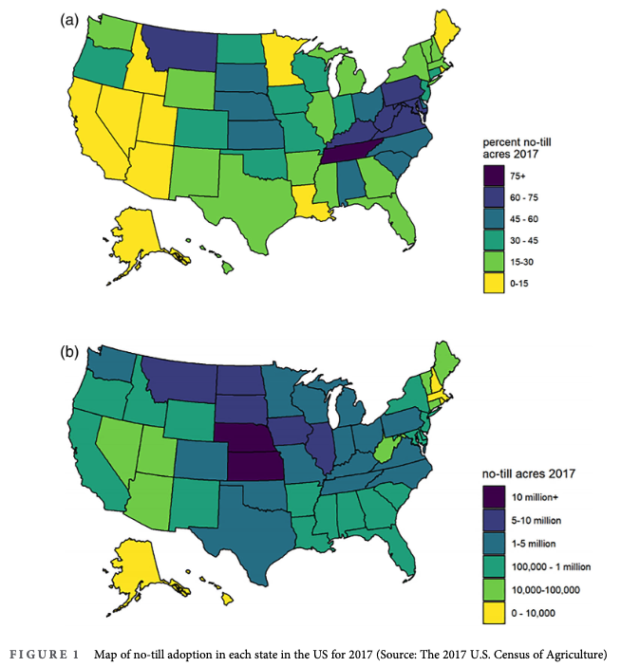A study by researchers at universities in the United States and Turkey found that a 1% adoption of no-tillage can substantially boost farmland values.
The article "The impact of no-till on agricultural land values in the United States Midwest" was published in June in the American Journal of Agricultural Economics.
Researchers examined data from three different sources to estimate the possible impact of no-till practices:
- The US Department of Agriculture's 2017 Agricultural Census
- The Iowa State University Center for Agricultural and Rural Development Farmland Values Survey
- The Operational Tillage Information System (OpTIS) database.
By combining all three data sets, researchers Le Chen, Roderick Rejesus, Serkan Aglasan, Steph Hagen and William Salas found that a 1% increase in no-tillage adoption within a county can increase agricultural land value by $7.86 per acre across 12 Midwestern states covered by the OpTIS database: Illinois, Indiana, Iowa, Kansas, Michigan, Minnesota, Missouri, Nebraska, Ohio, Oklahoma, South Dakota and Wisconsin. Using the Iowa State data, they concluded 1% adoption of no-till at the county level increases farmland values $14.75 (and possibly more) per acre inside Iowa.
Using statistical models, the researchers say they were able to eliminate other potential causes.
"This suggests that counties with higher no-till adoption rates also likely experience higher growth in farmland values, and this marginal land value effect of no-till is not explained by climate, inherent soil features, urbanization pressures and government payments," researchers write.
The results mirror various other studies conducted in the past.
"According to these studies, investment in soil conservation practices that seek to reduce damage from soil erosion can improve and stabilize agricultural productivity, as well as lower variable costs, which in turn can increase farmland values," they write.
The findings should be viewed as one additional incentive to spread no-till practices even further.
"The farmland value capitalization effect of no-till can viewed as an additional benefit that can help further incentivize uptake of this practice (especially farmers who own the land they operate)," they write.
The finding also has implications for U.S. policymakers.
"We believe that payments from federal cost-share programs such as the Environmental Quality Incentives Program (EQIP) would still have a role to play in terms of better aligning private incentives to adopt no-till with the off-site public environmental benefits from the soil health practice," they write.
At the same time, the study has limitations, which the researchers view as an opportunity for future research. For example, the study examines only no-till, and not other conservation moves like cover crops, nutrient management, or off-field structural practices. The study is also limited to the Midwest, effectively excluding similar estimates in the Northeast or mid-Atlantic states, and other portions of the world, like Canada or Brazil, with high rates of no-till adoption.
In addition, researchers focused on the count-level, not the level of individual farms.
They also say the statistical analysis used in their models were somewhat limited, because land value correlates with numerous other factors beyond the presence or absence of no-till.
"We leave all these potential extensions for future work," they write.








Post a comment
Report Abusive Comment